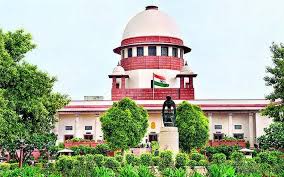The Minimum Support Price (MSP) is crucial for ensuring equitable prices for farmers and is determined by the Commission for Agricultural Costs and Prices (CACP).
The ongoing ‘Delhi Chalo’ protest, initiated on February 13, involves farmers from Punjab, Haryana, and western Uttar Pradesh marching towards Delhi to voice their demands. The primary focus of their agitation is the Minimum Support Price (MSP), a safety net that guarantees farmers a minimum income for their crops.
What is the Minimum Support Price (MSP)?
MSP, or Minimum Support Price, is the lowest rate at which government procurement agencies purchase crops from farmers. This mechanism serves to protect farmers from market fluctuations, providing them with stability and income security.
MSP, crucial for ensuring fair prices for farmers, is determined by the Commission for Agricultural Costs and Prices (CACP), taking into account production costs, market trends, and demand-supply dynamics. Established in 1965, CACP operates under the Ministry of Agriculture and Farmers Welfare. The final decision on MSP levels is made by the Cabinet Committee on Economic Affairs (CCEA), chaired by the Prime Minister.
How is MSP calculated?
The Minimum Support Price (MSP) is calculated by considering both the explicit and implicit costs incurred by farmers.
Explicit costs cover expenses like chemicals, fertilisers, seeds, and hired labour, while implicit costs include factors such as family labour and rent. These variables are represented by A2, FL, and C2.
A2 refers to the expenses for inputs like chemicals, fertilisers, seeds, and hired labour for crop growth, production, and maintenance.
A2 + FL includes both actual and implicit costs, such as family labour.
C2 incorporates A2 + FL along with fixed capital assets and rent paid by farmers.
Additionally, the Commission for Agricultural Costs and Prices (CACP) takes into account various other factors:
- Cost of cultivation per hectare and crop costs in different regions.
- Cost of production per quintal and regional differences.
- Market prices of relevant crops and their fluctuations.
- Other production and labour costs, along with associated changes.
- Prices of commodities bought or sold by farmers and any fluctuations.
- Information on product supply, including area, yield, production, imports, exports, and stocks with public agencies or industries.
- Demand information across regions, including total and per capita consumption, processing industry trends, and capacity.
Why are farmers protesting?
The ongoing farmer protests stem from demands for MSP assurance on all crops, implementation of Swaminathan Commission recommendations, debt relief, farmer pensions, withdrawal of cases against past protestors, and advocacy for India’s exit from WTO and free-trade agreements.


